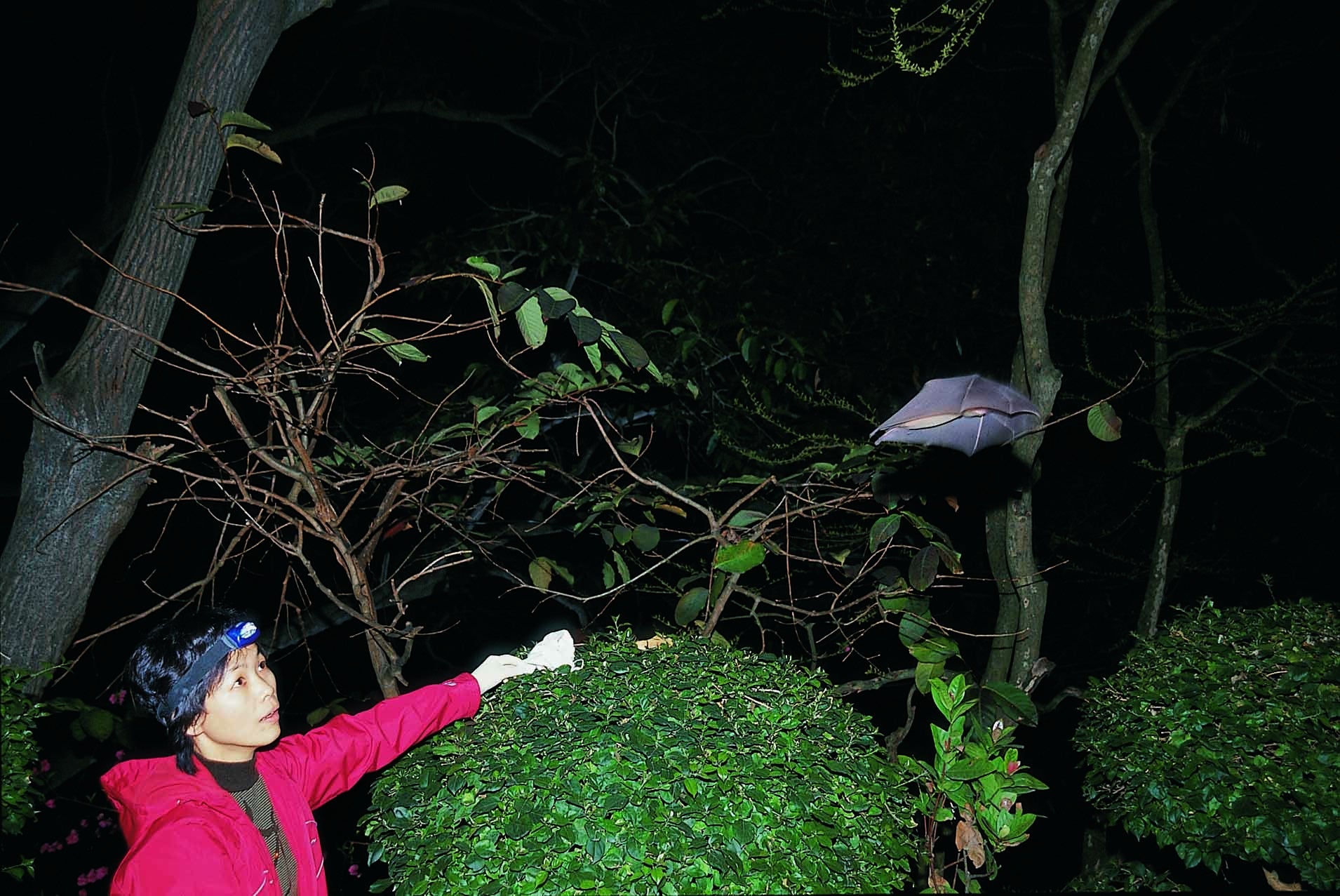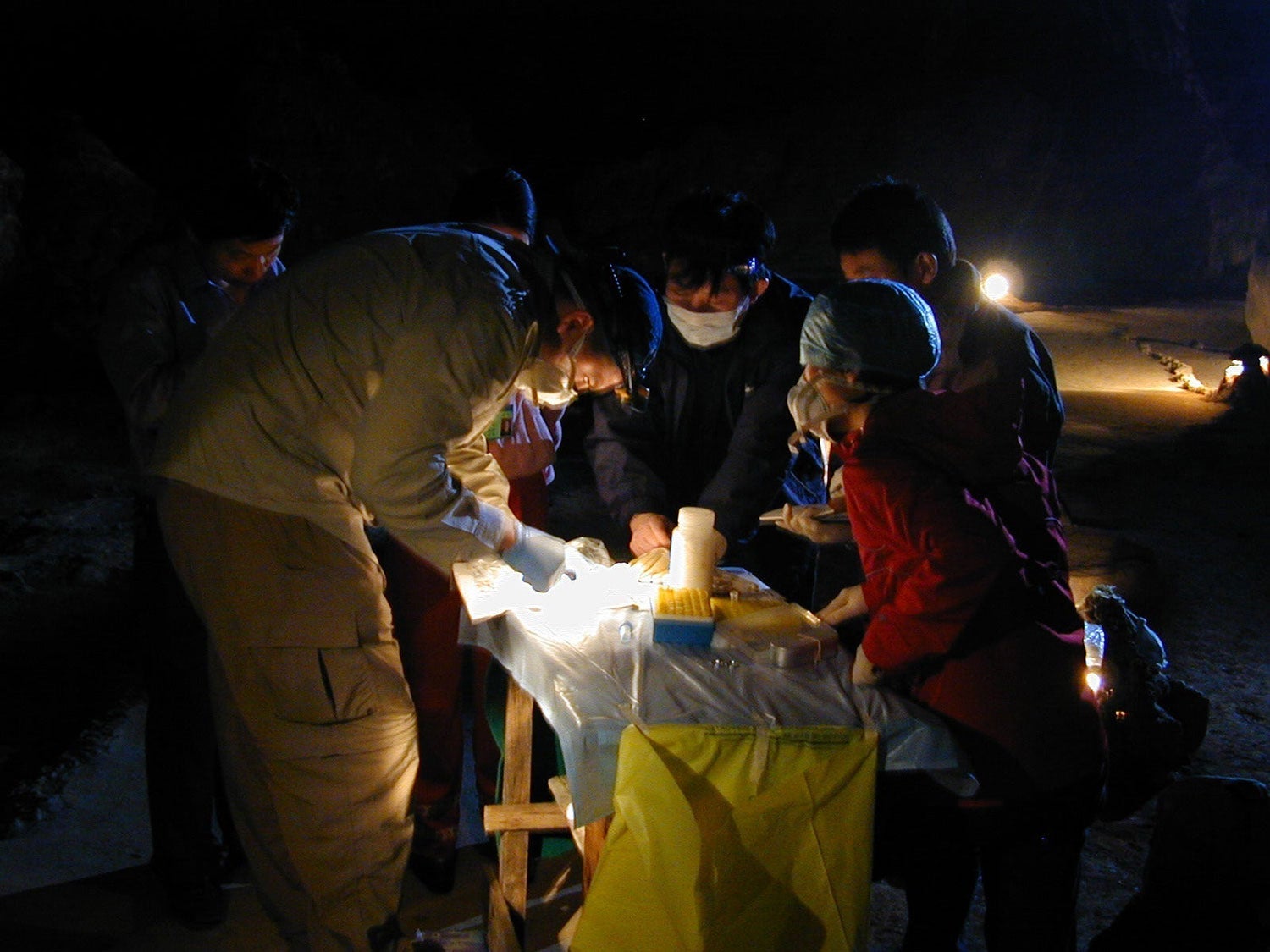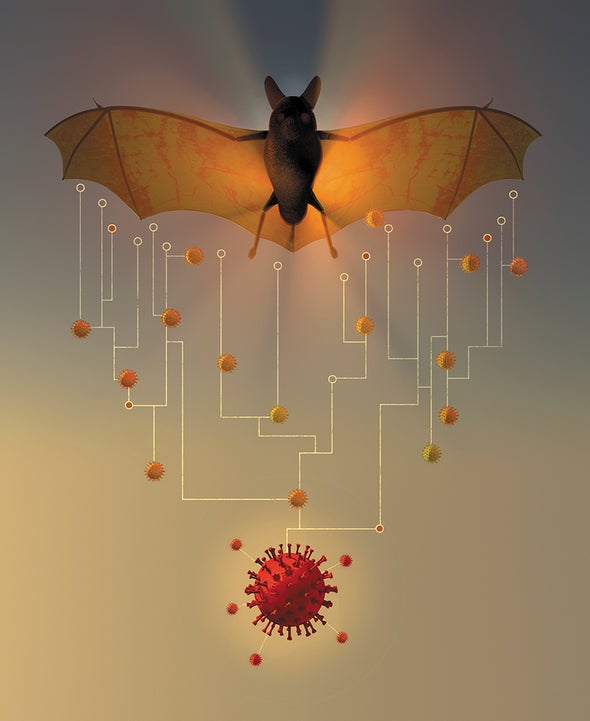A Riddle Within A Mystery
"A lab employee infected in the field while collecting samples in a bat cave -- such a scenario belongs both as a lab-leak hypothesis and as our first hypothesis of direct infection from bat to human. We've seen that hypothesis as a likely hypothesis.""In the beginning, they didn't want anything about the lab [in the report], because it was impossible, so there was no need to waste time on that. We insisted on including it, because it was part of the whole issue about where the virus originated.""It probably means there's a human error behind such an event, and they're not very happy to admit that. The whole system focuses a lot on being infallible, and everything must be perfect. Somebody could also wish to hide something. Who knows?""The politics was always in the room with us on the other side of the table."Dr.Peter Ben Ebarek, head, World Health Organization Wuhan Virus Investigation
 |
Peter Ben Embarek (center) and Marion Koopmans (right) say farewell to their Chinese counterpart Liang Wannian (left) after 9 February press conference to discuss the findings of a joint investigation into the pandemic’s origins. AP Photo/Ng Han Guan |
The original hypothesis brought to the investigative table by the members comprising the investigating team representing the World Health Organization was the likelihood of a Chinese scientist in the field becoming infected with a coronavirus directly from a bat while collecting bat samples. A supposition based on the likelihood of such an event occurring since it was a rational explanation; a zoonotic disease suddenly appearing for the first time, emerging out of such an encounter had been documented before, in other cases.
However, as Dr. Ben Embarek explained, this was an educated hypothesis that the Chinese with whom his team engaged as a proviso of their being permitted to conduct an investigation in China into the origins of the SARS-CoV-2 virus causing COVID-19 which was first identified and linked to a live market in Wuhan, a city of teeming millions which also incidentally hosted two virus-investigative laboratories, one of which was highly restricted.
Danish television channel TV2 released a documentary this week evolving out of an interview with Dr. Ben Embarek who spoke of the "likely hypothesis" a lab employee at the Wuhan Institute of Virology might have been infected while working in the field. The Chinese researchers that had partnered with the WHO team in their investigation were not prepared to discuss such a scenario, insisting no possible link existed of the origins of the pandemic and a Wuhan research laboratory.
 |
| A BAT CAVE in China's Guangxi province in 2004, Shi Zhengli releases a fruit bat after taking a blood sample. Credit: Shuyi Zhang |
The WHO-China team's follow-up report at the conclusion of the joint investigation claimed it to have been "very unlikely" the virus might accidentally have been leaked from the Wuhan Institute of Virology or any other facility in the city where the infections first emerged. No further investigation into the issue would be recommended by the joint research team. Whether to even include the lab-leak theory remained a thorn to the very end of the WHO team's stay in China.
By the time the mission concluded, Dr. Ben Embarek explained to Danish reporters that the Chinese counterparts of the investigative team finally came around to agreeing that a discussion might be in order "on the condition we didn't recommend any specific studies to further that hypothesis". As for the wording relating to the lab-leak theory of "extremely unlikely", Dr. Ben Embarek responded: "It was the category we chose to put it in at the end, yes"; at the same time it might have been categorized as possible, but simply unlikely.
 |
| A group of researchers prepare bat blood samples that they will screen for viruses and other pathogens. Credit: Shuyi Zhang |
The head of the WHO team also suggested that "human error" might have been involved, but given the Chinese political system disallowing authorities to admit such a possibility, it had to be discarded. Dr. Ben Embarek collaborated with the documentary filmmakers by filming his China trip on his cellphone for an inside view of a closely-kept trip. As the leader of the team of international scientists whose mission to China was to work with local officials in the investigation of the pandemic origins, he obviously feels an obligation to the world community to disclose any and all possible links to the origins of the pandemic.
A pandemic, after all, that still roils the world; one which up to the present caused over 200 million confirmed infections and at the very least 4.3 million deaths globally. The WHO team members alluded to the immense pressure brought to bear on them throughout the duration of the trip, with up to 60 Chinese colleagues working with the scientists but also collaborating with Chinese public health figures.
And while WHO chief Tedros Adhanom Ghebreyesus has declared that a deeper, more thorough investigation should proceed to clear up the remaining mysteries over the pandemic's source, Chinese officials declared it to be "impossible" to welcome a further China-focused probe. They will not expose themselves to anything they cannot control the outcome of.
 |
| Credit: Richard Borge |
"It’s now clear that during the second half of December [2019] there was wide circulation of the virus in Wuhan. The contribution of the market at that time was not so important anymore because the virus was also circulating elsewhere in the city. That, to me, is a big finding. That was not the picture we had before. The cases outside the market were showing differences in terms of [virus] sequence diversity. Whether that indicates multiple introductions to the city or a single introduction a little bit earlier, followed by spread in different parts of the city, is still unclear. But it all points towards an introduction in the human population in that area in the period October to early December 2019—most probably late November, not so long before the earliest cases were found. But the route of introduction remains a mystery."Dr. Peter Ben Embarek, head, WHO investigation into the genesis of the COVID-19 pandemic, February 2021 interview
Labels: China, COVID-19, Origins, SARS-CoV-2, Wuhan, Zoonotic

0 Comments:
Post a Comment
<< Home